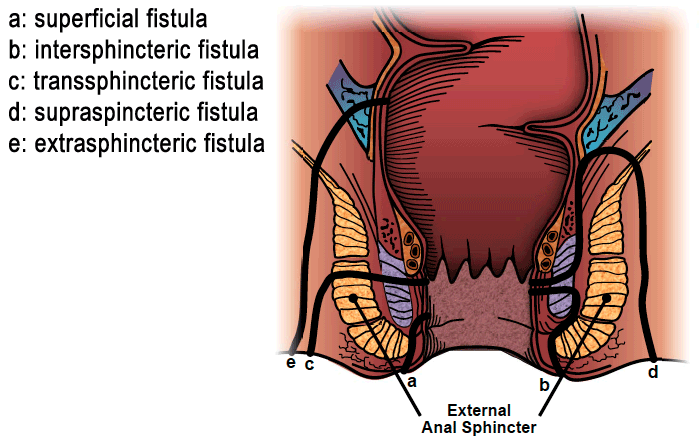fistula in ano
fistula-in-ano
A fistula-in-ano is an epithelial-lined tract connecting the anal canal to the perianal skin. Anal fistulas can have many causes but are most commonly the result of a previous or current anorectal abscess due to frequent infection of perianal glands. This occurs in up to 40% of patients with abscesses. Patients with fistulas commonly have a history of a previously drained anal abscess
Classification

SYMPTOMS
Anorectal pain, swelling, perianal cellulitis (redness of the skin), drainage from the perianal skin, irritation of the perianal skin and fever are the most common symptoms of fistula. Occasionally, rectal bleeding or urinary symptoms, such as trouble initiating a urinary stream or painful urination, may be present.
Treatment
Treatment of fistulas depends upon many factors. First of all your surgeon should examine and investigate thoroughly to know 1) tract direction 2) any active infection of fistulous tract 3) any branches 4) classification of fistula.
Various surgical modalities are :
- Fistulotomy. The most common type of surgery for anal fistulas is a fistulotomy. …
- LIFT procedure. …
- VAAFT ..Endoscopic ablation. …
- Laser surgery. …
- Fibrin glue. …
- Bioprosthetic plug.
- SETON
ASSOCIATION CERTIFICATIONS







